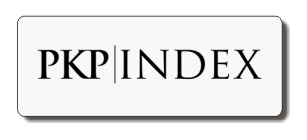PELATIHAN PENGEMBANGAN KONTEN E-LEARNING MENGGUNAKAN GOOGLE CLASSROOM SEBAGAI INOVASI PEMBELAJARAN GURU MATEMATIKA SMP
Abstract
The problem that underpins the program to develop e-learning content development using Google Classroom for teachers of SMP Muhammadiyah 4 Kebomas is the fact that the gap between Muhammadiyah schools in Gresik is quite sharp. The purpose of this community service is to improve the competency of teachers in the development of teaching materials using Google Classroom as one of the learning innovations for teachers in SMP Muhammadiyah 4 Kebomas Gresik. The implementation of the program as a realization of problem-solving materialized in periodic and scheduled activities through strengthening the concept of e-learning learning using Google Classroom, followed by the needs Analysis Workshop, e-learning system design Workshop using Google Classroom, e-learning content development Workshop using Google Classroom, Upload the development results to the system LMS In the implementation stage using the Lesson Study steps as many as two cycles. The methods used in the implementation of this activity are by process of discussion, workshop, and practice directly in the classroom. The results of this activity are the growing understanding of teachers about e-learning, Generated e-learning design consisting of the material design of each meeting, discussion activities for students, evaluation tools; Teachers can implement e-learning independently.
Keywords
Full Text:
PDFReferences
Hartley, D. E. (2001). Selling e-learning. American Society for Training and Development.
Jacob, S. M., & Issac, B. (2008). Mobile Technologies and its Impact – An Analysis in Higher Education Context. International Journal of Interactive Mobile Technologies, 10–18.
Jain, A., Martens, W. L., Mutz, G., & Weiss, R. K. (1996). Towards a comprehensive technology for recording and analysis of multiple physiological parameters within their behavioral and environmental context.
Krämer, B. (2005). Mobile Learning: The Next Generation of Learning, FernUniversität’s Contributions to the 2nd Year of the Project. In Technical Working paper, FernUniversität in Hagen, Version 1.[On-line]. Available: http://learning. ericsson. net/mlearning2/files/workpackage4/feu_technical_working_paper_2. Pdf.
Sung, Y., Chang, K., & Liu, T. (2016). The effects of integrating mobile devices with teaching and learning on students’ learning performance: A meta-analysis and research synthesis. Computers & Education, 94, 252–275.
Suryanti, S., Sutaji, D., Arifani, Y., Muyasaroh, M., & Zamzamy, M. (2020). (2020). Improved learning accessibility and professionalism of teachers in remote areas through mentoring development of teaching materials based on Augmented Reality. Kontribusia (Research Dissemination for Community Development), 3(1), 224–232.
Tamim, R. M., Bernard, R. M., Borokhovski, E., Abrami, P. C., & Schmid, R. F. (2011). What forty years of research says about the impact of technology on learning: a second-order meta-analysis and validation study. Review of Educational Research, 81, 4–28.
Wieser, D., & Seeler, J. M. (2018). Online, Not Distance Education: The Merits of Collaborative Learning in Online Education. The Disruptive Power of Online Education: Challenges, Opportunities, Responses, 125.
Woodill, G. (2010). The mobile learning edge: Tools and technologies for developing your teams. McGraw Hill Professional.
Yu, M., Yuen, A. H. ., & Park, J. (2012). Using Web 2.0 technologies: exploring perspectives of students, teachers and parents. Interactive Technology and Smart Education, 9(4), 204–216.
DOI: http://dx.doi.org/10.31604/jpm.v3i2.281-287
Refbacks
- There are currently no refbacks.





